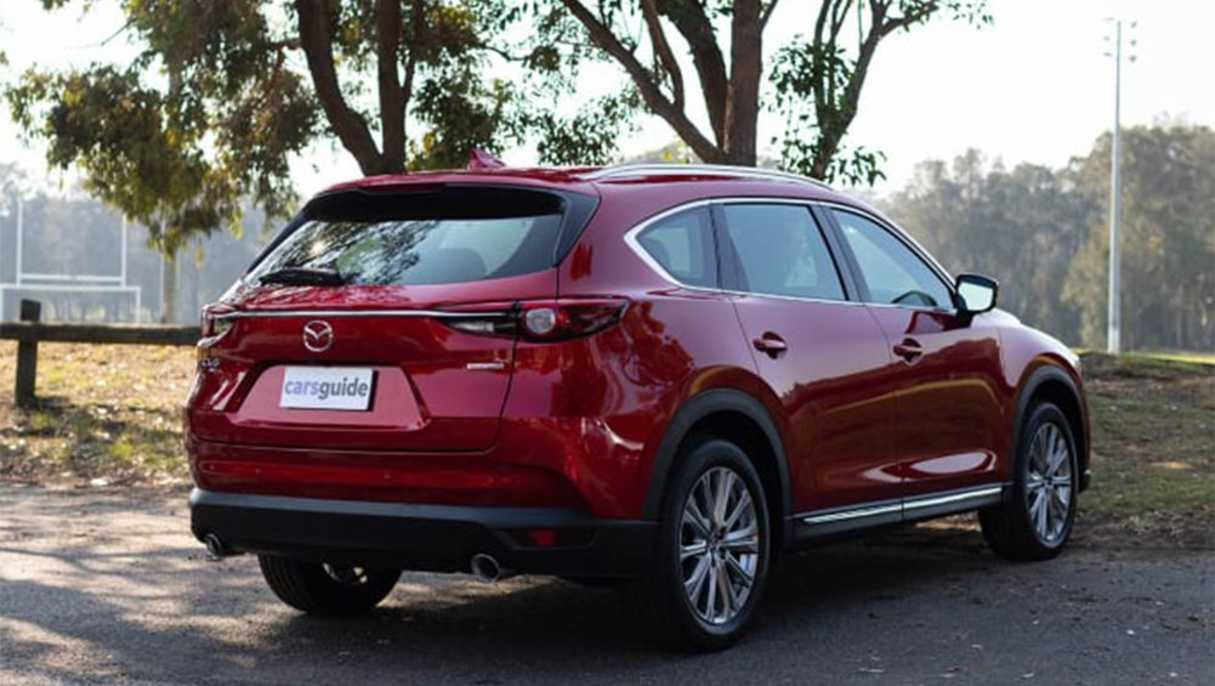Mazda has called time on two of its SUV models as it looks to focus on similar or replacement models going forward.
One of the two being discontinued, the three-row Mazda CX-8 large SUV, was relatively successful in its few years on sale, while the other is the less popular Mazda MX-30 small SUV - available as a mild-hybrid and an electric car.
With the Mazda CX-8’s global production being stopped to make way for the ritzier Mazda CX-80, Mazda Australia’s hands were tied with that decision - however, it’s move to pull the MX-30 from sale could have more to do with its low sales figures as well as its similarity to the far more popular (and less expensive) CX-30.
In its time in the market the MX-30 just surpassed 2200 sales in Australia, fewer than most of the brand’s models rack up in a year, and far less than the CX-30 small SUV’s 9581 so far this year.
The CX-8 seemed to fill a small gap in the market for enough buyers to justify its existence. After a few years on sale it built up from a couple of thousand sales a year to 3846 this year to the end of September.

Vinesh Bhindi, Managing Director of Mazda Australia, called the MX-30 a “trailblazer” as Mazda's first electric car on sale in Australia, despite it being relatively poorly received in the market compared to rivals due to a high price and low driving range.
The CX-30 starts from $30,610 before on-road costs, while the MX-30, with its arguably less convenient design (such as its ‘freestyle’ rear doors and smaller interior) stars from $36,610. In its electric ‘E35 Astina’ Guise, it costs $66,410.

Upon its launch, however, Mazda representatives freely told media there wasn’t an expectation the MX-30 EV would sell in significant numbers.
“This was previously unchartered territory, and the MX-30 has since served a hugely valuable purpose, both as a technology demonstrator and also to thoroughly prepare our dealer network with the knowledge and skills required for the next phase of our brand’s intensive evolution,” Bhindi said.

In addition, he said the CX-8 has “played a pivotal part in [Mazda’s] market growth” since it was introduced over half a decade ago.
He added that stock remains for those hoping to grab a CX-8 before it disappears from Mazda showroom as the company moves “into the next phase of the Mazda brand’s evolution, with electrification at the heart of [its] focus.”

“Fortunately, for drivers who want to enjoy everything the CX-8 has to offer in the meantime, stock is plentiful and readily available across our dealer network right now.”

The Mazda CX-8 and the MX-30 will remain on sale in Australia “throughout Q1 of 2024” meaning there are still a few months left to get into either.
The end of the line for the CX-8 follows the discontinuation of the CX-9 - another three-row SUV - earlier this year. Mazda is expected to run out of stock of the latter model by the end of this year.

That will leave the new CX-90 as Mazda's three-row offering, until the arrival of the yet-to-be-revealed CX-80. The CX-90 range is priced much higher than the CX-8 and CX-9, starting from $73,800 for the CX-90 G50e Touring AWD.





.jpg)
.jpg)

.jpg)
_0.jpg)


.jpg)



.jpg)
.jpg)
.jpg)





.jpg)




